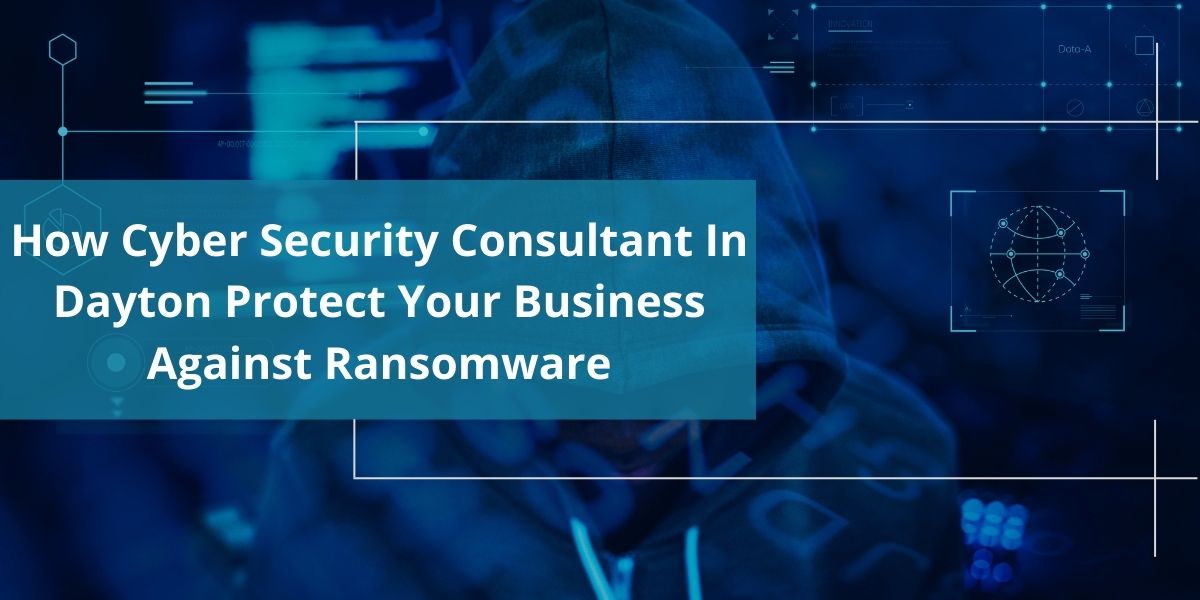Over the coming year, your firm might become a cyberattack victim if proper security measures are ignored. According to figures, cybercrime costs the US billions of dollars annually, and big and small firms are affected. The ransomware attack is one of the most common types of cybercrime. To ensure you can recover unharmed from a ransomware attack, you must hire the best Cybersecurity Consultant in Dayton, Ohio, to protect against it as a business owner.
Ransom demand is a typical example of prevention being better than treatment, especially if the latter can financially devastate your company.
Here are a few steps to Cybersecurity Consultant can strengthen your security, ward off ransomware assaults, and improve your chances of regaining access to your data.
1. Get Data Backup
A reliable backup strategy must be crucial to effective disaster recovery and business continuity plans. In addition, having backups can improve your organization's chances of recovering from ransomware should it get past your security. Outsourcing Cybersecurity Services in Dayton, Ohio, can help you keep a consistent schedule for daily and monthly backups and store them in many places.
Moreover, according to a long-standing backup rule, you can keep three copies of your data on different media, with one copy offsite. One resource for data that is inexpensive is cloud services. Your cybersecurity consultant can let you keep your data in a safe place. You'll have recent data stored in the cloud, ready to restore your systems after the ransomware is removed, should ransomware infect your primary network.
Cloud backup programs can potentially become infected by ransomware. Offsite backups are highly advised as a result. Such backups entail storing copies of backup data on media like SSD discs in a different physical location.
2. Preventive Measures
Preventative Actions. By providing initial and continuous training, you can ensure that your staff is your first line of defense. Your staff should be aware that files might be transmitted from a colleague's computer to appear legitimate, so they should never open attachments from someone they don't know. They should also be wary of unexpected attachments. Downloading files from locations other than the known and required ones shouldn't ever be done while browsing the internet. Cybersecurity Dayton, Ohio, helps you educate your staff regarding the preventive measures to keep in mind while handling crucial data.
3. Regular Patching And Monitoring
Monitoring the external digital attack surface, which includes all potential points of entry into your network, is essential. This covers things like IP addresses, ports, setups, and programs. In addition, because ransomware assaults can still be detected and dealt with even if your first line of security is secure, you should also be able to monitor what's happening inside the network.
Adequate and prompt patching guarantees that any discovered vulnerabilities are fixed on time before threat actors can take advantage of them. All apps you employ, both internal and external, as well as the operating systems on endpoint workstations and the firmware on devices connected to your network, should all be patched.
4. Account Management
Compromised credentials, which frequently come from the cybersecurity mentioned above education gaps, are a vital source of initial infiltration into networks. Poor user account management, however, can exacerbate the situation if hackers manage to gain access. Accounts with permissions over what those users require to perform their tasks frequently result from inefficient user account management. As a result, it becomes too simple for hackers to exploit their position of authority and migrate laterally to spread ransomware across other systems.
Stay Aware!!
Running a business never involves setting up cybersecurity and forgetting about it. Instead, it must be a continuous process that involves regular discussions on how to keep safe from an assault with your staff. Lastly, ensure a strategy for regaining access to your systems in case of an attack. By doing so, you'll prevent giving the attackers any motivation or reward to carry on.


